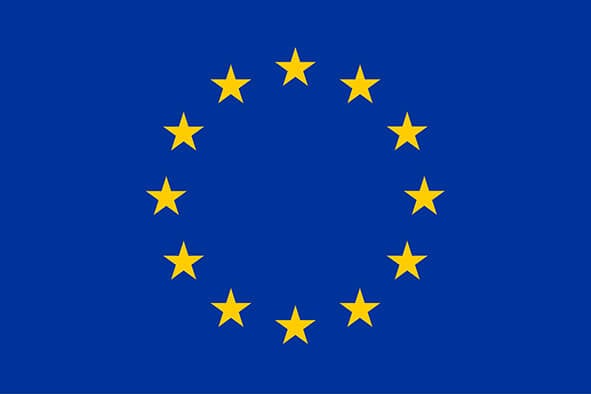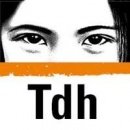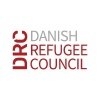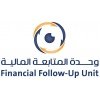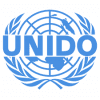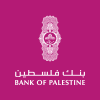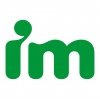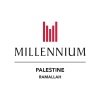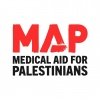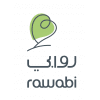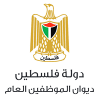External Evaluation of the Access 2 Protect (A2P) Project
Terms of Reference (ToR)
External Evaluation of the Access 2 Protect (A2P) Project
June 2025
-
Introduction
In 2023, the Terre des hommes Foundation (Tdh)—as lead applicant of a consortium comprising two Palestinian organisations—was awarded a grant by Enabel under the call “Awareness on Gender-Based Violence (GBV), Sexual and Reproductive Health and Rights (SRHR), and Support to Coordination among GBV/SRHR Service Providers.”
The funded initiative, “Empowering Youth and Adolescent Girls and Boys to Realise Their Protective Rights, Especially Persons with Disabilities” (hereafter ‘Access 2 Protect project’), is being implemented from September 2023 to July 2025 in the West Bank, notably across Jenin and Hebron governorates.
The consortium includes:
-
Terre des hommes – Lead applicant and coordination body.
-
Palestinian Family Planning and Protection Association (PFPPA) – Implementing partner in the West Bank.
-
Stars of Hope Society for the Empowerment of Women with Disabilities (SHS) – Implementing partner in the West Bank.
Strategic Objective
The project aims to advance the protection and fulfilment of rights for vulnerable adolescents, youth, and persons with disabilities by fostering inclusive, comprehensive, and coordinated GBV and SRHR services.
Intervention Pillars
-
Strengthening referral pathways and coordination mechanisms among service providers.
-
Building the capacity of health, social-service, and community workers.
-
Advocating for youth-friendly and disability-inclusive legal and policy frameworks.
-
Raising awareness through community-led campaigns that promote gender equality, youth engagement, and disability inclusion.
Purpose of the Final Evaluation
The final evaluation of Access 2 Protect project will:
-
Measure achievements and impact against the project’s expected results, outcomes, and indicators.
-
Generate evidence and learning to inform future programming for Tdh, consortium partners, and other stakeholders.
-
Ensure accountability to Enabel, participating communities, and all project stakeholders.
-
Support planning of evidence-based, strategic interventions that align with Enabel’s priorities and the consortium’s commitment to inclusive GBV/SRHR services.
Geographical areas:
Partner
Governorate
Location
PFPPA
Hebron
· Hebron city
SHS
Jenin
· Silat al Harithiya
· Qabatiya
· Arraba
-
Evaluation Objective
The overarching goal of the external final evaluation is to determine how effectively the project has delivered its intended results and contributed to its desired impact. Specifically, the evaluation will examine the degree to which the project has:
-
Raised awareness of GBV and SRHR among target groups and the wider community.
-
Strengthened coordination mechanisms between GBV and SRHR service providers.
-
Empowered adolescents and youth—including persons with disabilities—to exercise and defend their protective rights.
-
Expanded equitable access to quality, inclusive SRHR services for vulnerable girls, boys, women, and men.
The evaluation will assess progress against the project’s impact and outcome indicators, identify the principal enablers and barriers encountered, and generate actionable recommendations to inform future programming and strategic decision-making.
-
Evaluation Scope
-
Temporal scope: September 2023 – July 2025
-
Geographical scope: All project sites in Jenin and Hebron governorates, West Bank.
The evaluation will cover the entire results framework, with particular attention to the indicators below.
Impact-level indicators (as per project log-frame)
-
Percentage of increase in knowledge and practices for service providers who report improved ability to provide and refer to inclusive SRHR and GBV services.
-
Percentage of persons who report satisfaction with the service provided.
-
Proportion of annual increase in vulnerable individuals, including people with disabilities, accessing quality and inclusive SRHR services in targeted areas in the occupied Palestinian territory (oPt).
Outcome-level indicators (as per project log-frame)
-
Percentage of service providers using who report utilization of adapted referral pathways and inclusive guidelines/protocols.
-
Percentage of increase in community awareness and knowledge of GBV and SRHR issues as a result of the youth group's advocacy efforts.
-
Percentage of increased knowledge of accessible GBV and SRHR services among youth and adolescents partaking in project activities.
-
Data-Collection Methods and Illustrative Guiding Questions
The evaluator is expected to deploy a mixed-methods approach that is inclusive, culturally sensitive, and ethically sound. Recommended tools and sample questions are outlined below; the evaluator may refine them during the inception phase.
4.1. Evaluation Criteria and Guiding Questions
The evaluation will be guided by the five OECD-DAC criteria[1] to ensure a comprehensive and meaningful assessment of the project. Each criterion will be examined through a set of core questions adapted to the context of SRHR and GBV programming in the occupied Palestinian territory.
Impact-level indicators
Suggested tools
Illustrative guiding questions
Percentage of increase in knowledge and practices for service providers who report improved ability to provide and refer to inclusive SRHR and GBV services.
§ Structured survey
§ Key-informant interviews
Ø How confident are you in your knowledge of inclusive SRHR/GBV services?
Ø How frequently do you apply the referral pathway in daily work?
Ø Which inclusive practices have you adopted since the training?
Ø What challenges have you faced in applying new knowledge?
Percentage of persons who report satisfaction with the service provided.
§ Satisfaction survey
§ Focus-group discussions
Ø How would you rate the quality of the service received?
Ø Were your specific (including disability-related) needs met?
Ø Were you informed of your rights and next steps?
Ø What did you appreciate most and what could be improved?
Ø Did you find the environment inclusive and confidential?
Proportion of annual increase in vulnerable individuals, including people with disabilities, accessing quality and inclusive SRHR services in targeted areas in the oPt.
§ KIIs with service providers
§ FGDs with community members
§ Service-usage records
Ø Have you observed an increase in vulnerable groups accessing services? Why?
Ø What changes improved inclusivity and accessibility?
Ø How are persons with disabilities identified and reached?
Ø How did beneficiaries learn about the service, and what previously hindered access?
Ø What changes have you noticed in service-delivery modalities?
Outcome-level indicators
Suggested tools
Illustrative guiding questions
Percentage of service providers using who report utilization of adapted referral pathways and inclusive guidelines/protocols.
§ Key Informant Interviews (KIIs) with service providers
§ Direct observation (if feasible)
§ Review of documentation/tools used
Ø Are you currently using the referral pathways and inclusive protocols introduced by the project?
Ø How have these tools changed the way you deliver services?
Ø What adaptations were made to ensure services are accessible to all, including persons with disabilities?
Ø What challenges or limitations have you faced in applying the protocols in practice?
Ø How often are these protocols reviewed, updated, or discussed within your organization?
Percentage of increase in community awareness and knowledge of GBV and SRHR issues as a result of the youth group's advocacy efforts
§ Focus Group Discussions (FGDs) with community members
§ Interviews with youth advocates
Ø What changes have you noticed in community awareness around GBV and SRHR topics?
Ø What advocacy activities or messages from youth groups stood out most to you?
Ø Have you or anyone you know changed attitudes or behaviors as a result of these campaigns?
Ø How effective do you think youth-led efforts have been in reaching diverse segments of the community?
Ø What could be improved in future awareness campaigns?
Percentage of increased knowledge of accessible GBV and SRHR services among youth and adolescents partaking in project activities.
§ FGDs with adolescents and youth
§ Feedback forms from training sessions
Ø What do you know now about available GBV/SRHR services that you didn’t know before?
Ø Can you describe how and where to access these services?
Ø How did the project help improve your understanding of your rights and the support services available?
Ø Were the materials or sessions delivered in a way that was accessible and engaging?
Ø What other topics or information do you feel you still need?
-
Evaluation Criteria and Core Questions (OECD-DAC)
The evaluation will be guided by the OECD-DAC evaluation criteria—Impact, Effectiveness, Efficiency, Relevance, and Sustainability—to ensure a comprehensive and meaningful assessment of the project’s performance and contributions.
4.2.1 Impact: This criterion will assess the extent to which the project has contributed to meaningful and lasting changes in the lives of the target population. The evaluation will explore whether access to inclusive and quality SRHR and GBV services has improved, and whether there have been measurable shifts in knowledge, attitudes, and practices among service providers and beneficiaries. It will also examine any unintended outcomes—both positive and negative—and identify changes at the community and institutional levels that can be attributed to the project’s interventions.
4.2.2 Effectiveness: Under this criterion, the evaluation will focus on how well the project achieved its intended results. It will assess progress toward planned outcomes and determine whether the capacities of service providers and institutions (i.e., partners) have improved in delivering inclusive SRHR and GBV services. The functionality and effectiveness of the referral pathways and coordination mechanisms established during the project will also be examined, along with factors that either enabled or hindered the achievement of results.
4.2.3 Efficiency: The evaluation will analyse whether resources—financial, human, and time—were used optimally to achieve the project’s objectives. This includes assessing the cost-effectiveness of interventions, whether activities were implemented within the planned timeline and budget, and whether similar results could have been achieved using fewer resources or alternative approaches. The efficiency of the project’s management, coordination, and monitoring systems will also be reviewed.
4.2.4 Relevance: This criterion will consider the extent to which the project responded to the real needs and priorities of the target population, particularly vulnerable groups and persons with disabilities. The evaluation will examine whether the project’s strategies were appropriate for addressing gaps in SRHR and GBV services within the local context, and how well the intervention aligned with national policies, partner strategies, and international best practices.
4.2.5 Sustainability: Finally, the evaluation will assess the likelihood that the benefits of the project will be sustained beyond the funding period. It will consider whether systems, structures, and capacities have been institutionalised to ensure continued delivery of inclusive SRHR and GBV services. The commitment of local stakeholders, including health institutions and community groups, to maintaining and building on the project’s outcomes will be reviewed. The evaluation will also identify any follow-up actions or resources needed to support long-term impact and sustainability.
-
Methodology
The final evaluation should adopt a participatory, mixed-methods approach, integrating both quantitative and qualitative data from primary and secondary sources. Given the thematic complexity of the project GBV, SRHR, and disability inclusion—as well as the wide geographic scope, the selected evaluation consultant/team is expected to propose a contextually appropriate and time-efficient methodology that ensures inclusivity, credibility, and ethical rigor.
Where feasible, the evaluation should make use of existing data sources, including the baseline findings, monitoring reports, and documentation generated by Tdh and its consortium partners. At the same time, primary data collection should be prioritized in under-documented areas or among target groups newly reached during project implementation.
The evaluation approach should be adaptable to contextual constraints, including the possibility of using in-person, remote (phone-based or online), or hybrid data collection modalities, depending on accessibility, safety, and feasibility.
All evaluation activities must be implemented with conflict sensitivity and do-no-harm principles, ensuring that participants, communities, and evaluation staff are not exposed to any form of risk or harm during the evaluation process.
The methodology is expected to include, but not be limited to, the following:
-
Desk Review of relevant project documentation and adopted guidelines and policies (e.g., Protection from Sexual Exploitation and Abuse (PSEA), safeguarding policies, referral protocols, training curricula), national relevant policies and frameworks (notably those related to GBV and SRHR) and available secondary data.
-
Key Informant Interviews (KIIs) with Tdh project staff, implementing partners, and service providers.
-
Focus Group Discussions (FGDs) with youth, adolescents, and persons with disabilities to capture perceptions, experiences, and community-level change.
-
Structured Surveys targeting project beneficiaries and service providers to measure changes in awareness, knowledge, satisfaction, and behavioural practices.
-
Observations of selected safe spaces and youth-led initiatives, where applicable, to assess accessibility, inclusivity, and engagement quality.
The evaluator(s) should ensure that all tools and approaches are age-, gender-, and disability-sensitive, and aligned with national ethical standards and international best practices in research involving vulnerable populations.
6. Deliverables
The evaluator(s) will be responsible for the following deliverables:
-
Inception Report detailing the methodology, tools, and work plan.
-
Draft Evaluation Report (English) including preliminary findings and analysis.
-
Validation Workshop with Tdh and Enabel.
-
Final Evaluation Report incorporating feedback from stakeholders.
-
Summary presentation and/or evaluation brief with key findings and recommendations.
7. Timeline
The evaluation is expected to be conducted over a period of four to five weeks, tentatively starting on July 26th, 2025 and concluding by August 27th, 2025. The final timeline will be agreed upon during the inception phase.
8. Team Qualifications
The evaluation team should consist of one or more consultants with complementary skills and demonstrated capacity to conduct a robust final evaluation. The team should collectively possess the following qualifications:
-
Advanced university degree(s) in public health, social sciences, gender studies, development studies, or a related field.
-
At least 7–10 years of proven experience in evaluating international development or humanitarian projects, with a strong focus on GBV, SRHR, disability inclusion, and youth empowerment.
-
Solid expertise in both quantitative and qualitative research methodologies, including tool development, data collection, statistical and thematic analysis, and participatory approaches.
-
Demonstrated experience in conducting evaluations in complex or politically sensitive contexts, preferably in the oPt or similar settings.
-
Familiarity with international standards and guidelines on ethical research involving vulnerable populations, particularly adolescents and persons with disabilities.
-
Strong report writing, communication, and facilitation skills in both English and Arabic.
-
Ability to manage time effectively, respect deadlines, and work collaboratively with diverse stakeholders.
-
Gender balance, inclusion of persons with disabilities, and local expertise will be considered strong assets during the selection of the evaluation team.
9. Submission Requirements
Interested candidates should submit:
-
Technical proposal outlining the methodology, sampling strategy, and work plan.
-
Financial proposal (including all fees, travel, and data collection costs).
-
Curriculum Vitae (CVs) of the evaluator(s) or evaluation team.
-
At least one sample of a previous evaluation report relevant to GBV, SRHR, or similar thematic areas.
Full application as stated above should be submitted through the applicant's official email address to [email protected] by latest 13-7-2025.
9.1 Technical Offer:
-
Executive Summary: An overview detailing why the applicant is the most suitable candidate for the assignment, highlighting key strengths and capabilities.
-
Comprehensive Methodology: A detailed methodology outlining how the assessment will be conducted.
-
Team Member Profiles: A comprehensive list of team members' CVs in English.
-
Division of Effort and Roles: Consultant/ Consultancy firm should clearly outline how effort and roles for each team member across the various tasks and phases of the assignment.
-
Detailed Work Plan: A well-structured and detailed work plan showing all the activities to be carried out during the project period.
-
Portfolio of Experiences & References: Provide a portfolio showcasing at least three recent assignments in the field of youth/woman/people with disability development and raising awareness, including a brief description of each assignment, key deliverables and client references.
9.2 Financial offer:
Should be submitted in USD and include all anticipated costs (fees, taxes, travel, transportation, translation, etc.)



